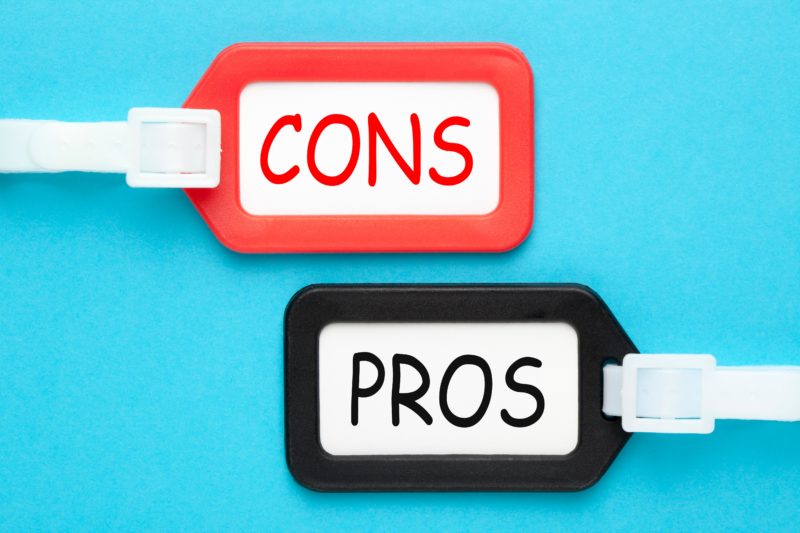
|
|
You might be using an unsupported or outdated browser. To get the best possible experience please use the latest version of Chrome, Firefox, Safari, or Microsoft Edge to view this website. |

Balance transfer credit cards hold out promise for those struggling with debt.
For some, a zero percent balance transfer can shave years off of debt repayment and save thousands in interest payments. For others, however, a balance transfer can, like a yo-yo diet, ultimately result in even more debt.
Therefore, before applying for a zero percent balance transfer credit card, consider the following pros and cons in order to determine if a balance transfer is the right move for you.
Pros of a zero percent balance transfer
0% Interest
The first and primary benefit of a zero percent balance transfer credit card is the 0% APR offer. In some cases lasting 21 months, the 0% introductory APR enables consumers to carry debt without paying interest. The result is that all of your monthly payment goes to pay down the balance on the credit card.
Let’s look at an example. We’ll assume a consumer has $2,000 in credit card debt at an interest rate of 13%. While the minimum payment will vary from one card to the next, a typical minimum payment will equal about 2% of the outstanding balance. In our example, the minimum payment the first month would be about $40. Of this amount, more than $21 would go toward interest payments.
Continue paying just the minimum payment each month, and interest payments grow exponentially. According to this Bankrate calculator, it would take 179 months and interest payments of $1,813.37 to retire this debt.
Transfer that balance to a card with a zero percent introductory APR and the picture changes dramatically. With a 21 month 0% balance transfer card, for example, you could pay off this debt entirely without interest by making monthly payments of less than $100.
Debt Consolidation
A second benefit of a balance transfer card is consolidating your existing debt. If a consumer carries balances on several cards, merging the balances onto a single balance transfer credit card will remove the inconvenience of making multiple monthly payments.
Lower Credit Utilization
A third potential benefit is a long-term improvement of a consumer’s credit score. While a balance transfer can negatively affect your credit score in the short term, as we’ll see below, over time a balance transfer may increase your score, according to Experian.
This is because a balance transfer will likely decrease your utilization rate. The utilization rate compares your outstanding balances on revolving credit like credit cards to your available credit. Credit scores view a lower utilization rate as a sign of responsible credit use. A lower utilization rate also shows that a consumer has credit to use in case of an emergency.
With a balance transfer, your total credit increases by the amount of credit on the new balance transfer card. Assuming you don’t incur any more debt, your utilization rate will go down. While this is not a justification by itself to transfer a balance, It is a potential long-term benefit.
Cons of a balance transfer
There is no free lunch. While balance transfer credit cards offer some benefits, they also come with some potential risks and costs.
Balance Transfer Fee
First, most cards charge a balance transfer fee. The fee is expressed as a percentage of the amount transferred. Three percent is the most common, but fees range from as little as no fee to as much as 5% or more. Cards with a zero percent balance transfer promotion include Amex Everyday and the Chase Slate* card. We list cards with no transfer fees in our ranking of the best balance transfer credit cards.
Regular APR
A second risk is the regular APR of the new card. If the debt is not paid in full before the 0% introductory APR expires, the remaining debt will be subject to the card’s regular APR. For many cards, the actually APR will vary depending on the applicant’s creditworthiness. Therefore, make sure to reduce the majority of debt while using the introductory APR rate. If you can’t pay your debt off in that time period, compare the new APR with the APR on the card you’re transferring your debt from. If the new rate is higher, it could cancel out any progress you have made on reducing your debt during the 0% introductory period.
Credit Limits
A third issue relates to credit limits. While a consumer may have $10,000 in high interest debt, for example, it doesn’t mean the new balance transfer credit card will offer that much available credit. The amount of credit extended is based on a number of factors and varies from one issuer to the next. So be prepared to either transfer only a portion of your debt to the new card, or to apply for multiple balance transfer cards.
Credit Inquiries
Applying for multiple cards brings us to a fourth potential pitfall. While we noted above that a balance transfer card can improve your credit score in the long term, it can hurt it in the short term. That’s because credit scoring formulas consider a consumer’s recent application for new credit. While a single new credit card application likely won’t lower a score significantly, applying for multiple new credit lines can. More importantly, if you will be shopping for a mortgage in the near future, even a drop of a few points can result in a higher mortgage rate.
Excellent Credit Required
Fifth, only “applicants with excellent credit will qualify for introductory credit card offers like zero percent balance transfer,” according to Discover Bank. This isn’t so much a disadvantage of balance transfer cards as it is a warning. The best 0% balance transfer offers go to those with credit scores near or above 700.
Risk of More Debt
Finally, a consumer runs the risk of adding more credit card debt once their interest burden goes down. They may end up with more debt than when they started. After you transfer your balance to a new credit card, you suddenly have more credit available. This can be a temptation for some to continue to spend and to add more debt. Here Socrates’ wisdom comes to mind, “know thyself.”
Ultimately, a zero percent balance transfer makes sense if the majority of your debt can be paid off before the promotional period of the card ends, the new APR after the promotional period does not offset progress, and any balance transfer fees can be avoided or comfortably covered.





